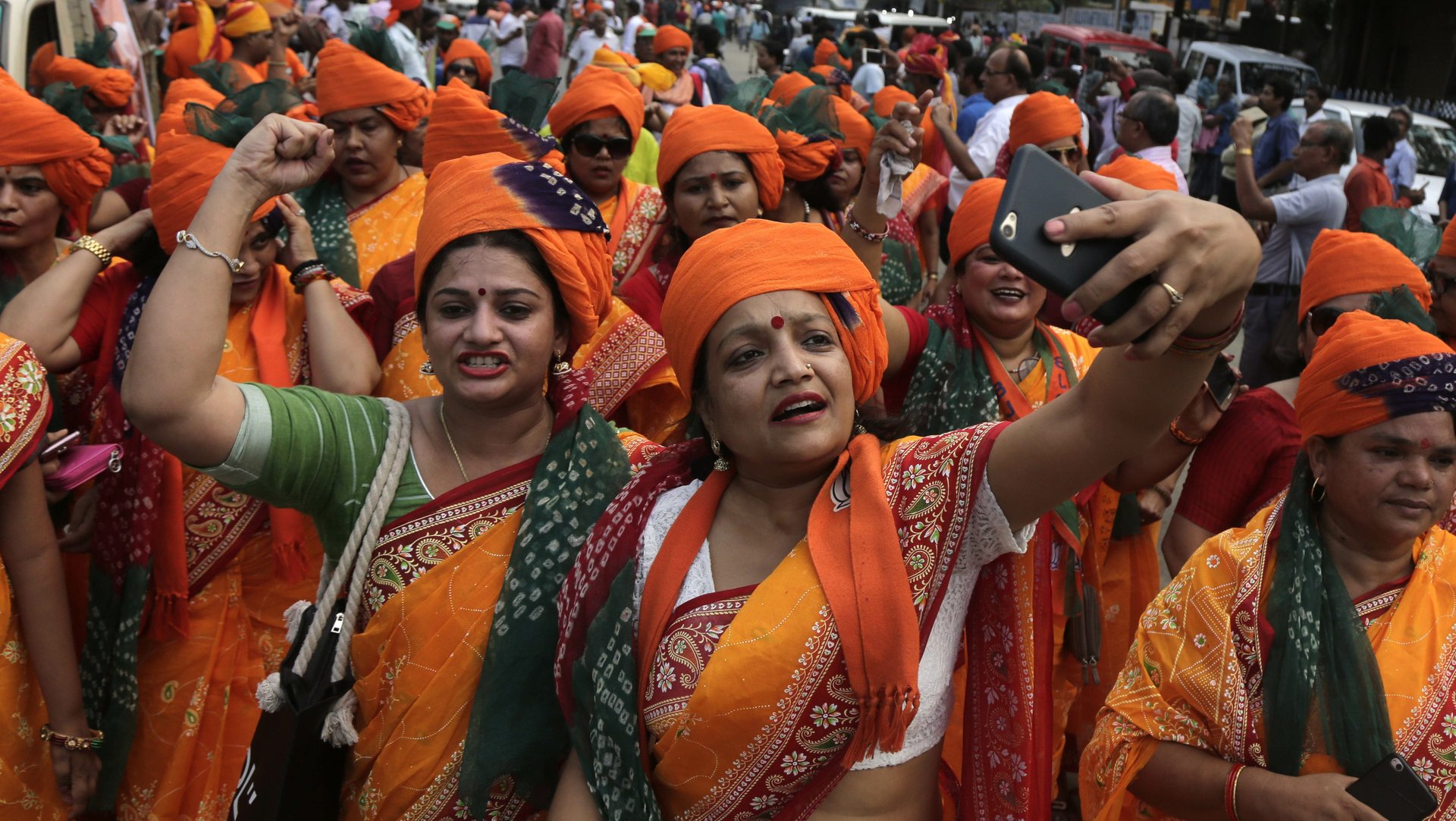WhatsApp is driving Indian women to vote like never before
Indian women are for the first time in India’s democratic history becoming a powerful political force. It’s about time for a demographic that represent 9% of the entire world’s population.


Indian women are for the first time in India’s democratic history becoming a powerful political force. It’s about time for a demographic that represent 9% of the entire world’s population.
Since India became a democracy in 1947, election turnout among women always fell far below the turnout of men. But that trend is changing. And now more women than men might vote by the end of the country’s massive Lok Sabha elections, a month-long process to elect India’s House of Representatives.
Many women are still missing from the voter rolls — many millions, according to some estimates. This is largely due to lingering disenfranchisement and deliberate voter suppression. It’s possible that a targeted voting advocacy campaign by the Indian Election Commission, better access to education, and general emancipation have helped empower more women to vote.
But really it’s the rise of social media and, in particular, WhatsApp.
Shaili Chopra, the founder of SheThePeople.TV and author of The Big Connect — Social Media and Indian Politics, told Quartz that WhatsApp has transformed political awareness and participation among women.
“The power of digital is pretty much gender agnostic when it comes to the opportunity to speak up or learn,” Chopra said. A decade ago, she added, voting was often a one-day conversation in the life of a woman.
Not anymore.
Today, the conversation has changed dramatically. Chopra said women are in WhatsApp groups with hundreds of members who all discuss political preferences.
“Things have moved from me walking to the neighbor to have a conversation to having the conversation coming at me at a rate that never existed before,” she said. These conversation make women feel more involved, and then more inclined to participate when the time to vote comes around, she added.
Social media platforms also help women express themselves in a way they might not be able to at home, where traditional roles still often hold sway. As a result, many Indian women—who were once largely unengaged in politics—are now part of a collective “uprising of the female voter in India,” Chopra said.
This is especially true in rural India, according to Prannoy Roy and Dorab Sopariwala, who together wrote The Verdict, a book on India’s election. The turnout of women in villages is 6% higher than that of their urban counterparts. Rural Indian women, in fact, just might be the largest voting demographic in the country this time around.
A missed opportunity
While more women are voting, how they might vote remains relatively unknown. Roy and Sopariwala said their research showed that women are likely to vote independently from their friends or families or husbands. This reality could force political parties—in order to attract votes from this new powerful block of voters—to pay dedicated attention to the needs of women. But perhaps unsurprisingly, few have yet to try that. Instead, campaigns resort to marketing around antiquated ideas of what women want.
“Every new scheme that the BJP [Bharatiya Janata Party] has is packaged as a woman’s policy,” Milan Vaishnav, the director of the Carnegie Endowment for International Peace in South Asia and a researcher on Indian democracy, told Quartz. Programs like building toilets or providing gas stoves are presented as solutions to women’s needs.
While many women indeed support such programs as a matter of health or sanitation, they are opportunistic in nature and do little to combat the patriarchal structure of Indian politics.
“Most women are asking for things which are actually social infrastructure rights, not necessarily women’s rights,” Chopra noted. But no political party, she says, has been able to tackle women’s issues as an integral part of national politics, ones that are in everyone’s interest to solve.
“A large number of men in politics make statements that are horrifying. They talk about what women should wear, how they behave. They have an opinion about everything—except about what they did for their betterment,” Chopra said. Safety, for instance, which is a massive concern for women, has been largely ignored by electoral campaigns.
“I am not totally convinced that political parties know what women want,” Milan said. “We tend to be very patriarchal in the way that we talk about women’s policies.”
Read Quartz’s coverage of the 2019 Indian general election here.